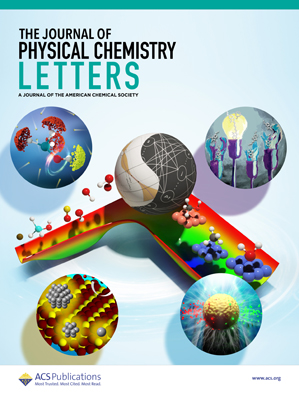缺陷在控制单壁碳纳米管化学性质中的重要性
IF 4.6
2区 化学
Q2 CHEMISTRY, PHYSICAL
引用次数: 0
摘要
单壁碳纳米管(SWCNTs)中的缺陷可作为化学反应的活性位点,实现在原始SWCNTs中无法实现的选择性功能化和分子相互作用。通过改变电子结构和局部反应性,缺陷在控制SWCNTs的化学性质中起着关键作用,决定了它们如何与外部分子相互作用。在这篇综述中,我们探讨了缺陷工程如何将SWCNTs转化为化学转化的平台,从控制缺陷引起的光学跃迁的光物理原理开始。然后,我们研究了引入原子和分子缺陷的策略,它们对荧光行为的影响,以及它们在促进化学反应中的作用。此外,我们讨论了在缺陷组成与光学和化学性质之间建立直接关联的挑战。最后,我们强调了缺陷工程SWCNTs在分子传感、生物成像和催化方面的新机遇,强调需要合理的化学设计策略来充分利用其潜力。本文章由计算机程序翻译,如有差异,请以英文原文为准。

The Importance of Defects in Controlling the Chemistry of Single-Walled Carbon Nanotubes
Defects in single-walled carbon nanotubes (SWCNTs) serve as active sites for chemical reactions, enabling selective functionalization and molecular interactions that are otherwise inaccessible in pristine SWCNTs. By altering the electronic structure and local reactivity, defects play a pivotal role in controlling the chemistry of SWCNTs, dictating how they interact with external molecules. In this mini-review, we explore how defect engineering transforms SWCNTs into platforms for chemical transformations, starting with the photophysical principles governing defect-induced optical transitions. We then examine strategies for introducing atomic and molecular defects, their influence on fluorescence behavior, and their role in facilitating chemical reactions. Additionally, we discuss the challenges in establishing direct correlations between defect composition and both optical and chemical properties. Finally, we highlight emerging opportunities for defect-engineered SWCNTs in molecular sensing, bioimaging, and catalysis, emphasizing the need for rational chemical design strategies to harness their full potential.
求助全文
通过发布文献求助,成功后即可免费获取论文全文。
去求助
来源期刊

The Journal of Physical Chemistry Letters
CHEMISTRY, PHYSICAL-NANOSCIENCE & NANOTECHNOLOGY
CiteScore
9.60
自引率
7.00%
发文量
1519
审稿时长
1.6 months
期刊介绍:
The Journal of Physical Chemistry (JPC) Letters is devoted to reporting new and original experimental and theoretical basic research of interest to physical chemists, biophysical chemists, chemical physicists, physicists, material scientists, and engineers. An important criterion for acceptance is that the paper reports a significant scientific advance and/or physical insight such that rapid publication is essential. Two issues of JPC Letters are published each month.
 求助内容:
求助内容: 应助结果提醒方式:
应助结果提醒方式:


